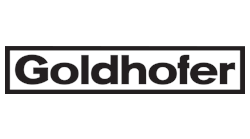The 2006 Aviation Industry Expo in Las Vegas has passed, but in case you weren’t there, we would like to recap some of the highlights.
This year’s show was truly a success, with more than 5,400 attendees (a 7 percent increase over 2005) and 454 exhibitors (versus 443 in 2005).
In addition to the ground support seminars, Ground Support Magazine also featured its second annual Ground Support Leader of the Year award presentation and luncheon. The winner is Tim Wix, general manager of GSE of Delta Airlines. See more about our winner on page 31.
Tuesday
This year’s GS seminars began with Hydrogen Fuel Cell Technologies. The first speaker was Mike Mead, United States Air Force (USAF) Advanced Power Technology Office (APTO), who talked about APTO’s mission, goals and focus areas, major successes, as well as hydrogen production and fueling. Mead also spoke of challenges and what the Air Force needs, like technological breakthroughs, more collaboration, funding commitments, government policy and a change of mind-set on how the Air Force thinks about alternative power. Charlie Myers, Nuvera Fuel Cells, discussed how fuel cells work, what types of fuel cells are available and the many advantages fuel cells have in ground support equipment: no emissions, no need to park at a specific location for charging, no watering required, no oil changes or leaks and less overall maintenance. The third speaker was Capt. James Muldoon, US Army National Automotive Center (NAC), who spoke about the Advanced Energy Initiative, the hydrogen refueling station and maintenance facility in Selfridge Air National Guard Base in Michigan, as well as a partnership with Quantum Fuel Systems Technologies Worldwide for a hydrogen dune buggy. Finally, Kevin Harris of Hydrogenics Corp. discussed some of the benefits of hydrogen: efficient, odorless, low vibration, and socio-political and economical value; some of the challenges: cost, reliability, codes and standardization, and storage and infrastructure; and applications and refueling options.
In Best Practices in GSE Fleet Maintenance, Arnold Barlow and Warren Mounts, both of UPS Professional Services, talked about UPS’s airline; balancing longevity, reliability and cost; preventative maintenance; using study teams and data; and treating employees right.
A380 Part 1—Cargo and the A380 was Tuesday’s third session. Thilo Stilp of Airbus discussed both the A380 (passenger) and A380F (freighter). Stilp said that Tim Clark, president of Emirates airline, described the A380’s three seating layouts as such: “Three different layouts—you fit the horse to the course.” Stilp also talked about ground operations testing in France and Germany, which tested the A380 and A380F’s compatibility with ground support equipment for loading freight, boarding bridges, GSE positioning and service point access. Two pieces of GSE that may be needed for the A380 are a tow tractor capable of handling it and an upper deck catering vehicle. The one piece of new equipment that may be needed for the A380F is an upper deck cargo loader, Stilp said. He also compared the A380F with the Boeing 747-F in terms of capacity and loading times.
In the last GS session on day one of AIE, six manufacturers spoke at A380 Part 2—GSE for the A380. All of the presenters discussed ground support equipment that is available (or will be in the near future) for the A380 and A380F. Speakers included Mike Doane of Douglas Equipment; Nick Heemskirk of FMC Technologies; Jeff Walsh of Global Ground Support; Carsten Schmidt of Goldhofer; Matthias Korword of Hydro; and Scott Gordon of TLD.
Wednesday
Wednesday’s GS sessions began with Selling to the Commercial Airlines, which first featured Larry Laney of Southwest Airlines. Laney discussed Southwest’s fuel hedging, aircraft orders and a new purchasing policy. Tim Wix of Delta spoke about equipment specifications and pre-qualifying and approving suppliers and increased purchasing this year. Jim Houck of Continental talked about vendors demonstrating equipment, how emissions regulations determine decisions and the issue of enforcing and monitoring standards. Mark Clark of Federal Express discussed how infrastructure cost constitutes one-third of all GSE costs and diesel particulate matter traps being put on equipment.
The second session was The Future for Fueling. Glenn Hipp of Southwest Airlines discussed issues with fuel storage such as outdated facilities, environmentally non-compliant storage and existing infrastructure unable to support growth. Ron Pattie of Skytanking spoke about retrofitting, equipment on refuelers and fuel data capture equipment. He said, “The technology is there; the coordination is not.” Michael Lundmark of Varec talked about refuelers using handheld computers and a wireless data collection unit, which uses Bluetooth technology or GPRS FM. Lundmark said with available technology, airlines can make better fuel purchasing decisions and save money.
Thursday
The GS sessions at AIE concluded with Doing Business with the Military on Thursday. Tony Anikeeff, a partner in the prestigious law firm Bracewell and Giuliani, spent an hour with a group of exhibitors and attendees going over some of the benefits and problems in dealing with the US Department of Defense and, in particular, the US Air Force. Many GSE companies that had never thought of being a supplier to the military have seen the success of other companies that took the plunge and bid and won contracts. The new WASP designed and manufactured munitions trailer was on conspicuous display during AIE. Anikeeff made clear that there was a learning curve involved in finding out what the military needed and bidding for the business in a way that ensured that the company had taken advantage of the inducements, such as a preference for small business, that the D.o.D. offers and avoiding the pitfalls that can trap a company into a money-losing position. Anikeeff’s experience and the participation of a law firm that has worked with many companies give the client the experience gained by serving others and move the client down that learning curve. When asked about fees, Anikeeff pointed out that money invested in a lawyer who knew the territory and the people involved brought quicker and better results with attendant savings. One participant said, “Engaging an inexpensive local law firm that does not know any more about the procurement process than you do is like buying a cheap tool that will not do the job. In the long run, it’s a loser.”








